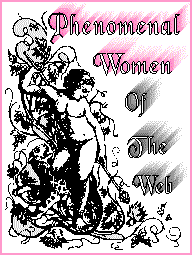|
|
If you would like the answers, please click on the title of the section that has you stumped.
| 1. What is a quilt? | 2. Name the 3 basic parts of a quilt. 3. What is
b. a medallion quilt? c. a strippy quilt? d. a whole-cloth quilt?
b. a baby quilt c. a king-sized quilt 5. What is a set? | 6. When is it inappropriate to use a set? 7. Give some uses for borders. 8. Why do we quilt or tie quilts? 9. What is tieing? 10. In what situations is tieing more appropriate than quilting? 11. Briefly describe |
b. pieced blocks
b. a one-patch pattern c. a 4-patch pattern d. a 9-patch pattern e. a 16-patch pattern f. a 5-patch (25-patch) pattern g. a 7-patch pattern h. a pattern utilizing curved seams i. a pattern depicting an object j. a non-symmetrical pattern 13. Differentiate between applique and
broderie perse. | 14. Define the Golden Rectangle. 15. What is a visually pleasing ratio between the width of a block and the width of a setting strip? 16. Discuss the differences between trapunto and stuffing. 17. In what situations are trapunto and stuffing appropriate? 18. Why is pure cotton fabric generally
preferred over cotton/polyester blends these days? | 19. Discuss the relative merits of pre-washing or not pre-washing fabric. 20. What is the difference between bleeding and crocking? 21. What is the effect of tea-dying? 22. What part does fabric color play in quilt design? 23. How does the following affect a quilt
design? |
b. using print fabric instead of solid c. using print fabric all the same scale instead of different scales d. using stripes or plaids instead of non-directional prints 24. Discuss the relative merits of pressing
block seams to one side and pressing them open. | 25. What is the function of basting? 26. Discuss the relative merits of pin basting (including QuilTak) and thread basting. 27. In what situations is it appropriate to have a pieced or applique design on the backing? 28. Define or sketch an appropriate piecing design for a "plain" backing for a quilt that is wider than the widest fabric available. 27. Discuss the advantages and disadvantages
of |
b. cotton/polyester batting c. pure polyester batting d. silk batting e. wool batting f. other batting (i.e., corn husks, old blankets, etc.) 30. Describe some techniques for
transferring a quilt design to fabric. | 31. Discuss the relative merits of hand quilting and machine quilting. 32. How do you measure the length of your quilting stitch? 33. What is bearding? 34. Give some techniques to prevent or counteract bearding. 35. Describe the differences between the rocking stitch and the poke stitch. 36. Define
b. outline stitch c. filling stitch d. stippling 37. Describe or draw a sketch of these
quilting designs: |
b. Baptist fan c. clamshell d. diamond
b. Ocean Waves c. Snowball
b. biscuit quilts? 41. Discuss the relative merits of
straight-grain and bias binding. | 42. Describe the steps in making bias binding. 43. How do you self-bind a quilt? 44. What is the purpose of a label? 45. What is the minimum information that should go on a label? 46. How can you keep the label from being
detached from your quilt? | 47. Describe the construction of a rod pocket. 48. What are embellishments? 49. In what situations are embellishments appropriate? 50. How do you store a quilt |
b. long-term? 52. What is the best way to clean an antique quilt? 53. What is a cutter quilt? 54. What factors do you use in determining whether to restore a damaged antique quilt? 55. In 1995, what is the official age of a
quilt |
b. whose top was made in 1834 and was quilted in 1973? c. that was made in 1914 and repaired in 1992? 57. How does black light help to date
a quilt? | 58. What are the unique features of
b. Japanese quilts? c. northern English quilts? d. Baltimore Beauty quilts? 59. Give a short history of |
b. Hawaiian applique c. the role of quilts in the Underground Railroad | |||||||||||||||

|
| 
|